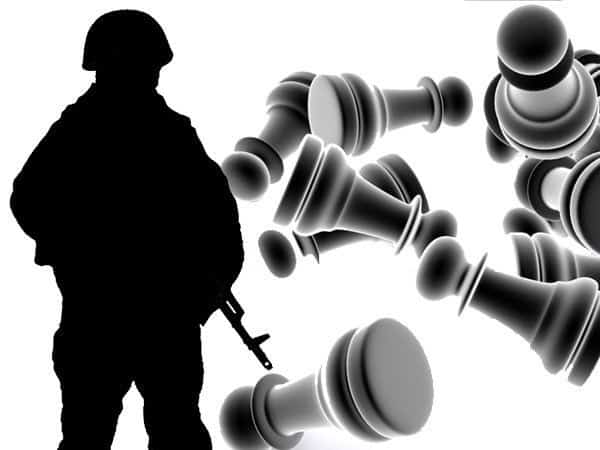Over the past few days, we observed the completion of the formation of enemy strike tactical groups in Donbas (strike [groups] in particular–their composition, place of deployment and character of conducted activities do not suggest that the Russian-terrorist troops are preparing for a defense), at the moment they are practically ready for an offensive. At the same time, Russia is intensively moving its units to the state border with Ukraine. Because of this, the question arises whether we should anticipate, firstly, a large-scale offensive by the Russian-terrorist troops in Donbas, and secondly, an open Russian invasion?
Let’s start with the latter. The fact that the Russians are moving, among other things, operational-tactical missile systems to the border, suggests that Putin is considering the option of open aggression against Ukraine (quite obviously, under the guise of “protecting the local population of Donbas that expressed their will in the elections at the DNR and LNR”). However, this scenario is clearly not the primary plan, and its preparation is more like a “safety net,” as well as the way to put pressure on Kyiv and to prevent Kyiv’s active offensive operations against terrorists.
This conclusion can be made based on the fact that:
1) Moscow never officially recognized the “DNR” and “LNR” [Donetsk- and Luhansk People’s Republics] as quasi-state formations – Russia only expressed its “respect for the will of the people in the south-east of Ukraine” in the course of the pseudo-elections (however, this formulation completely allows Putin “to defend ‘this’ will” if necessary).
2) Units of the Russian army that arrive into Donbas change into the uniform of local insurgents, with gang insignia, servicemen’s documents are seized – [these facts] demonstrate Russia’s focus on the continuation of the existing format of covert invasion.
This means that we shouldn’t discount open Russian invasion; it can most likely happen as a result of an offensive by Russian-terrorist forces on Donbas, their defeat, and successful offensives by Ukrainian troops in response.
And now about the preparation of enemy troops for the offensive in Donbas.
First of all, let’s talk about their composition. We, the Information Resistance group, cannot agree with the statements made by representatives of Western agencies and some representatives of the Ukrainian government that it’s only “instructors” from Russia who work in Donbas, training insurgents. The information at our disposal which also gets confirmed practically every hour (by the way, including testimony by captured Russian soldiers), suggests that not only Russian mercenaries are active in Donbas, but also Russian army units–including staff subversive and reconnaissance groups of GRU Spetsnaz, airborne units, and units that are part of Ground Troops brigades of Russian Armed Forces (mostly from Southern and Central Military Districts). Therefore, we urge officials to use caution when making such statements. [We] don’t need to pretend that we are only fighting against local insurgents, and that Russia does not carry out a covert invasion, and that they [Russia] only “help” them [“separatists] out. This is [simply] untrue.
Secondly, let’s talk about the plans of [the Russian] offensive. It’s clear to everyone that since these strike [tactical] groups have been created, then they will soon be used “in accordance with their intended purpose.”
Moreover, the enemy doesn’t believe that the Ukrainian troops will launch an offensive in the nearest future, otherwise [Russia] would engage in at least a semblance of defensive measures. Special thanks to Europe, who insistently forces Kyiv to “fulfill the ceasefire conditions,” although the “ceasefire” is [in itself] constant shellings by insurgents and the Russians. The number of attacks since the beginning of the “truce” is close to 2,500 and as a result we have a permanent expansion of territories controlled by the terrorists, and more than 100 fatalities on our side.
We are confident that only the show of strength on our part will disrupt the enemy’s offensive plans. And if Kyiv is not ready for offensive actions for political reasons (including because of the threat of open invasion by Russia and the reluctance to upset the pathologically peaceful EU), then at least [we] must significantly enhance our defenses and firmly respond to attacks and any attempts of offensive actions and forcing our troops out from their positions. [We must] also initiate preemptive strikes against concentrations of live enemy troops and equipment near the positions of our troops.
[We] must finally understand that the “peaceful agreements” are the cover that allow the Russian-terrorist forces to spread more across the [Donbas] region, using the passivity of the ATO forces. If someone wants to play “in the peace”–no problem, [they] can conduct negotiations on a daily basis. But in practice, this should not prevent Ukrainian troops from acting appropriately and symmetrically to enemy actions. Unless, of course, we’re not going to meet the occupiers with flowers and songs about “the great friendship of brotherly nations.”





